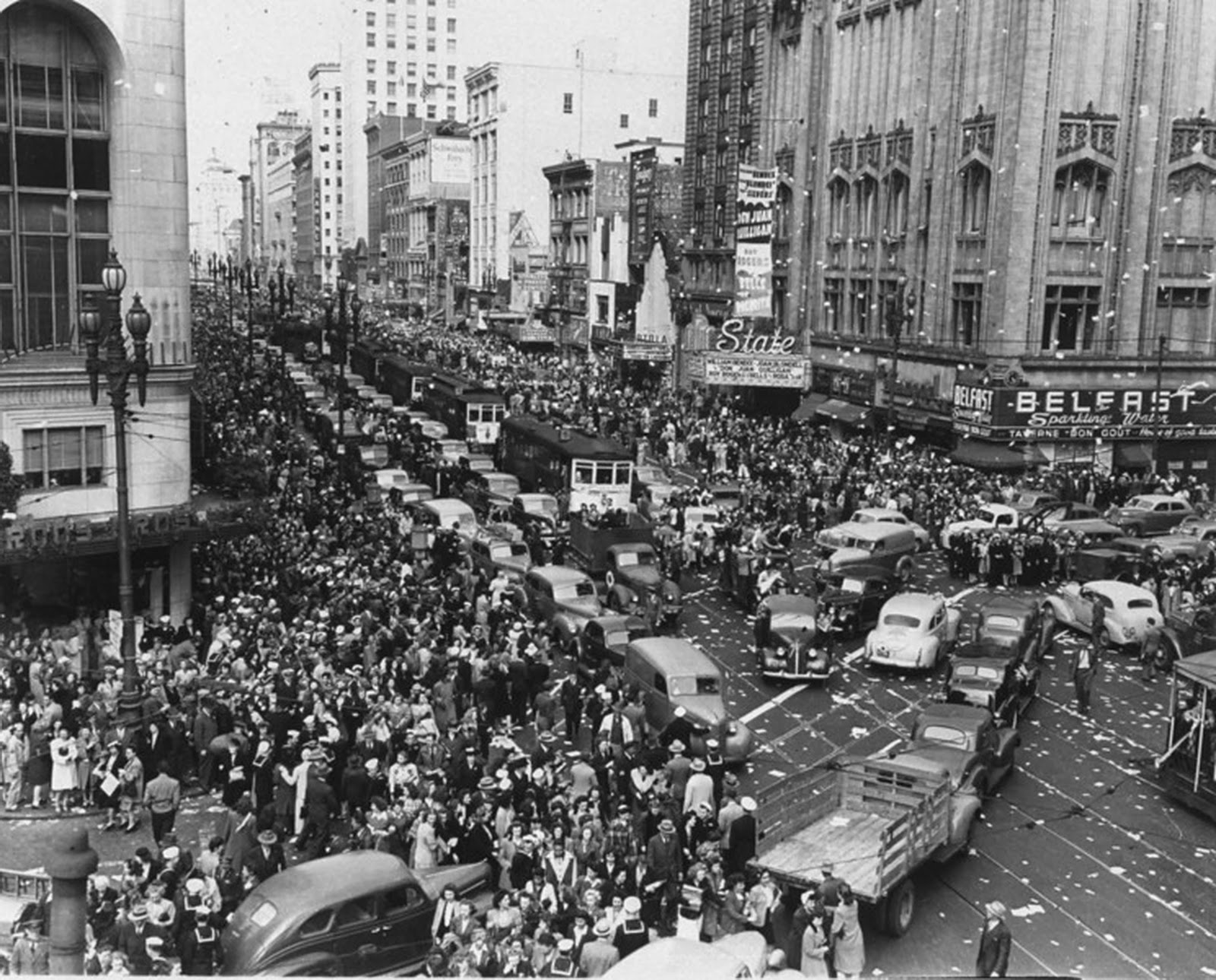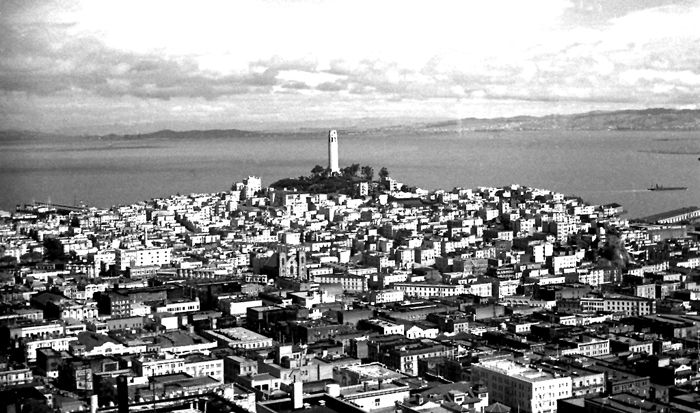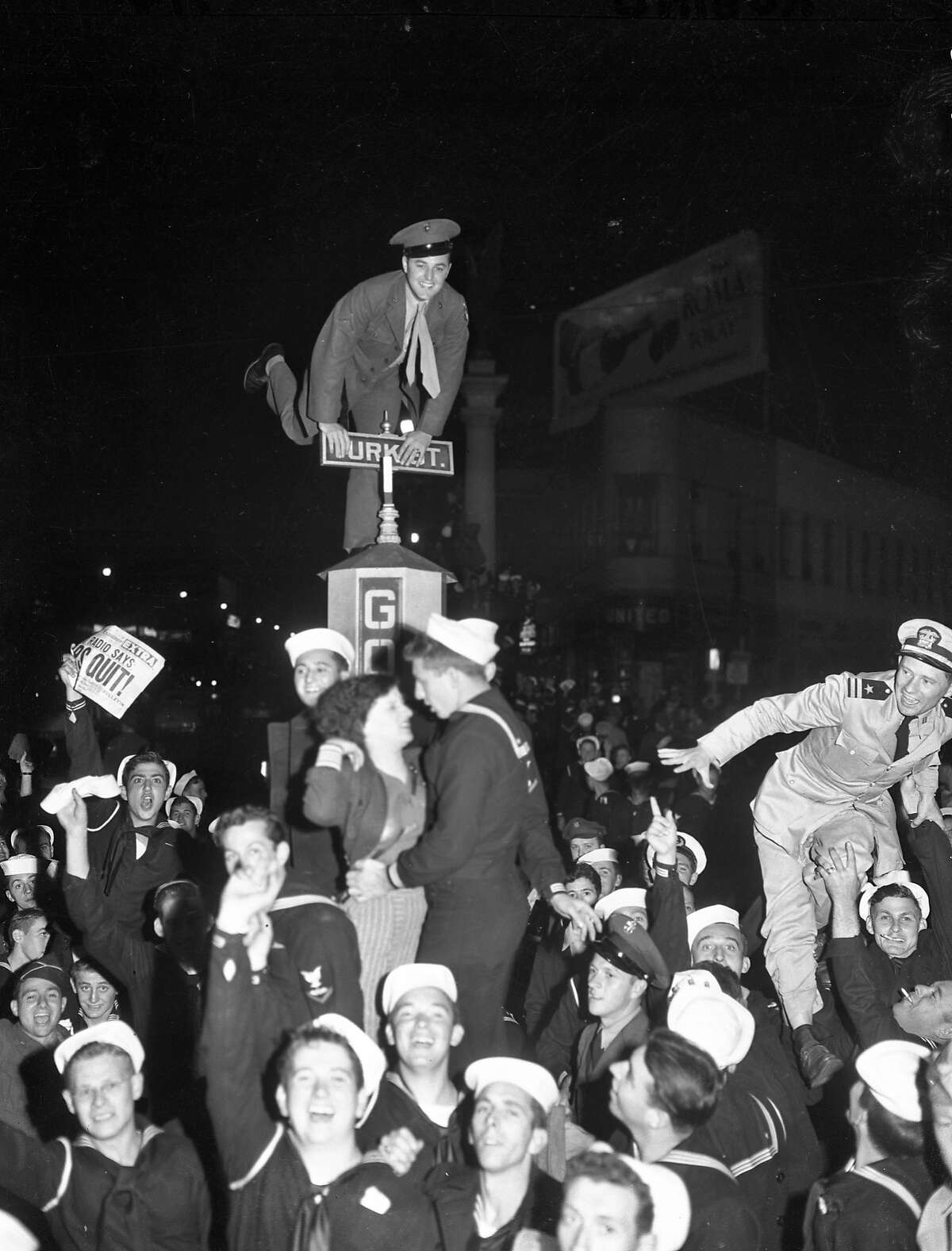
The Golden Gate at War: San Francisco’s Crucible in World War II
Before December 7, 1941, San Francisco was a city of misty mornings, cable car clangs, and the Golden Gate Bridge, a symbol of westward expansion and romantic possibility. Its hills offered panoramic views of a tranquil Pacific, and its bohemian spirit was already legendary. But with the attack on Pearl Harbor, the city, perched on the edge of that very ocean, was irrevocably thrust onto the front lines of World War II, transforming from a picturesque port to a bustling, vital crucible of the Allied war effort. For nearly four years, San Francisco would become the nation’s primary gateway to the Pacific Theater, a vibrant industrial powerhouse, and a city profoundly reshaped by the demands of global conflict.
The shock of Pearl Harbor rippled through San Francisco with immediate and palpable fear. Residents awoke to a stark new reality: the war was no longer a distant European affair. Air raid sirens, blackout drills, and the constant threat of attack became part of daily life. Coastal defenses were rapidly fortified, with massive gun batteries at Fort Funston, Fort Cronkhite, and other strategic points guarding the Golden Gate. Anti-submarine nets were strung across the bay entrance, and the city’s iconic lights were dimmed, replaced by a pervasive wartime gloom designed to evade enemy planes and submarines. The fear, though never fully realized in terms of direct attack, was a constant, unsettling presence.
The Gateway to War: Port of Embarkation

San Francisco’s strategic location made it indispensable. Its deep-water port, already a hub of Pacific trade, was swiftly converted into the largest military embarkation point for the Pacific Theater. From its docks, an incessant stream of Liberty Ships, troop transports, and cargo vessels departed for the battlefields of the Pacific, carrying millions of soldiers, mountains of supplies, and the hopes of a nation. "Every day, it felt like a small city was packing up and shipping out," recalled Mary Ann Smith, a local resident who watched the ships depart. "The bay was never empty. It was a constant flow of men and machines heading into the unknown."
Indeed, the numbers are staggering: over 1.6 million troops would embark or disembark from San Francisco’s piers during the war. Each soldier passing through the Golden Gate was a poignant sight, their faces a mixture of apprehension and resolve, often waving goodbye to loved ones for what might be the last time. The city became synonymous with farewells and reunions, a place where the human cost of war was vividly displayed.
Industrial Might: The Shipyards Roar
Beyond its role as a logistical hub, San Francisco and its surrounding Bay Area became an industrial titan. The demand for ships, aircraft, and armaments sparked an unprecedented economic boom. Henry J. Kaiser’s shipyards, particularly in nearby Richmond, became legendary for their speed and efficiency, famously building a Liberty ship in a mere four days. The Hunters Point Naval Shipyard, within San Francisco itself, expanded dramatically, becoming a crucial facility for repairing and refitting naval vessels damaged in the Pacific.
These shipyards operated 24 hours a day, seven days a week, their cacophony of hammering, welding, and grinding a constant soundtrack to the war effort. The economic opportunities drew hundreds of thousands of workers from across the country, particularly from the American South, leading to a dramatic demographic shift. This influx of labor, while vital for production, also brought significant social challenges, including housing shortages and increased racial tensions.
The Homefront Transformed: Rosie the Riveter and Rationing
Life on the homefront was transformed. Patriotism surged, manifesting in victory gardens that sprouted in backyards and parks, producing food to supplement rationed supplies. Ration books became essential for purchasing everything from sugar and coffee to gasoline and tires. Scrap metal drives, bond rallies, and blood donations were commonplace, fostering a collective sense of purpose. "We all felt like we were part of something bigger," remembered Eleanor Vance, who worked as a welder at a Bay Area shipyard. "Every rivet, every shift, felt like it was helping to bring our boys home."
Women, in particular, stepped into roles traditionally held by men. The iconic "Rosie the Riveter" became a symbol of this seismic shift, and San Francisco’s factories and shipyards were filled with women performing skilled labor. They built ships, assembled aircraft, and kept the city’s infrastructure running, proving their capabilities and permanently altering perceptions of women’s roles in society. This period laid the groundwork for future social and economic changes.

A Dark Stain: Japanese American Internment
Amidst this fervent patriotism and collective sacrifice, a darker chapter unfolded: the internment of Japanese Americans. Following Executive Order 9066, issued in February 1942, approximately 120,000 people of Japanese descent, two-thirds of whom were American citizens, were forcibly removed from their homes on the West Coast and incarcerated in remote inland camps. San Francisco’s Japanese American community, a vibrant part of the city’s fabric for decades, was devastated.
Families were given mere days to dispose of their businesses, homes, and possessions, often at tremendous financial loss, before being transported to temporary assembly centers like the Tanforan racetrack in Daly City, just south of San Francisco, and then to permanent camps like Manzanar and Topaz. This act, driven by wartime hysteria and racial prejudice, remains a profound stain on America’s commitment to civil liberties. As one internee, George Takei, later reflected, "It was a dark period in our history, a betrayal of the very ideals we were fighting for."
Social Melting Pot and Tensions
The massive influx of workers, particularly African Americans migrating from the South seeking wartime employment, transformed San Francisco’s demographics. The city’s Black population exploded, growing from around 5,000 in 1940 to over 40,000 by 1945. This rapid change, while providing essential labor for the war effort, also exacerbated existing racial tensions. Housing was segregated and scarce, leading to overcrowding and resentment. Competition for jobs and resources occasionally boiled over into clashes, though San Francisco largely avoided the large-scale race riots seen in other industrial cities.
The city became a complex tapestry of cultures and experiences – servicemen on leave from the Pacific, new arrivals from across the nation, long-time residents adjusting to the frenetic pace, and a deep undercurrent of anxiety for those with loved ones overseas. Despite the challenges, a resilient spirit permeated the city, fueled by a shared understanding of the war’s stakes.
The War’s End and a New Beginning
As the tide of war turned, San Francisco remained a crucial hub. When victory was finally declared in 1945, the city erupted in jubilant celebrations, a profound release of pent-up emotion and years of sacrifice. The ships that had carried men to war now brought them home, often to emotional reunions on the very docks from which they had departed.
The end of the war did not mean a return to the pre-1941 San Francisco. The city had grown, diversified, and matured. Its industrial capacity had expanded, its social fabric had been stretched and rewoven, and its identity as a global city had been cemented. In a fitting symbolic gesture, San Francisco was chosen to host the United Nations Conference on International Organization in April 1945, where delegates from 50 nations drafted and signed the UN Charter. This pivotal event, even as the war still raged in the Pacific, marked San Francisco as a city of peace and diplomacy, a beacon of hope for a future free from global conflict.
When the last troopship sailed home, San Francisco was not the same city that had waved them off. It was larger, more diverse, scarred by sacrifice, and profoundly shaped by its pivotal role in the greatest conflict in human history. The Golden Gate, once a symbol of leisurely passage, had become a portal to destiny, a crucible where a city, and a nation, forged its wartime identity and emerged forever changed. The echoes of that era – the industrial hum, the poignant farewells, the resilient spirit – continue to resonate in the vibrant, complex character of San Francisco today.


